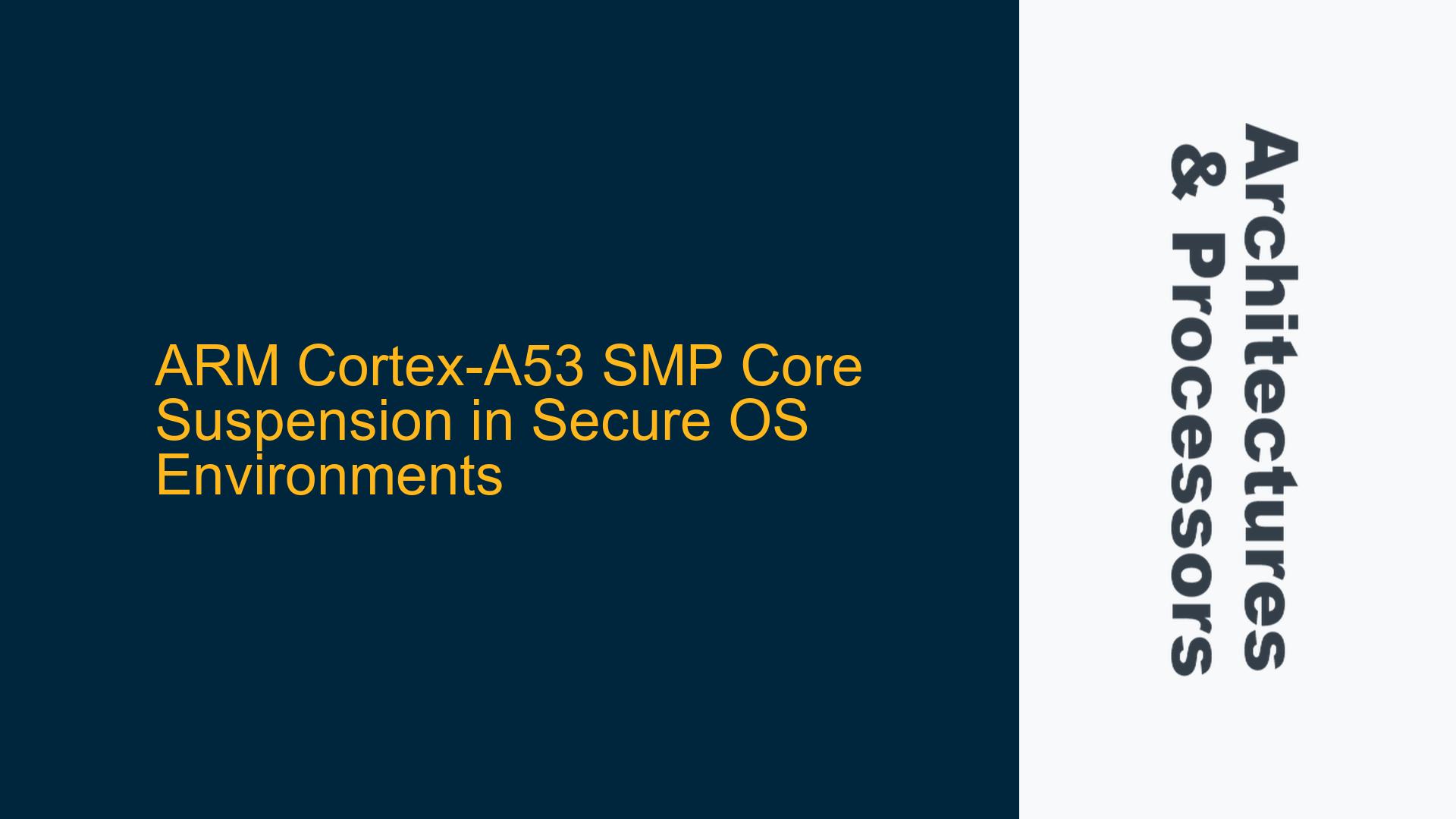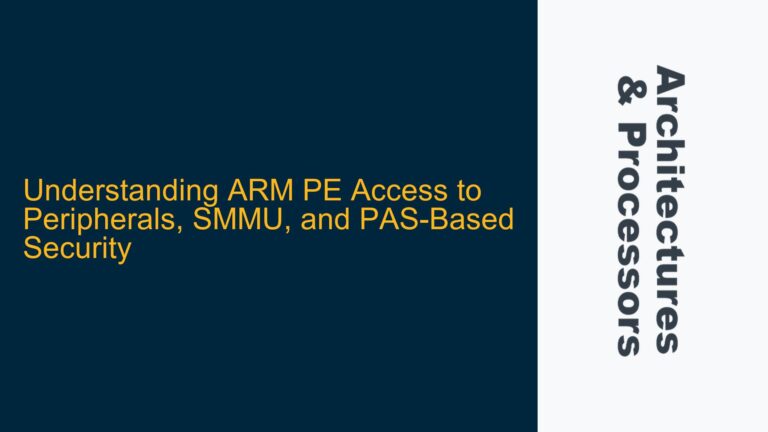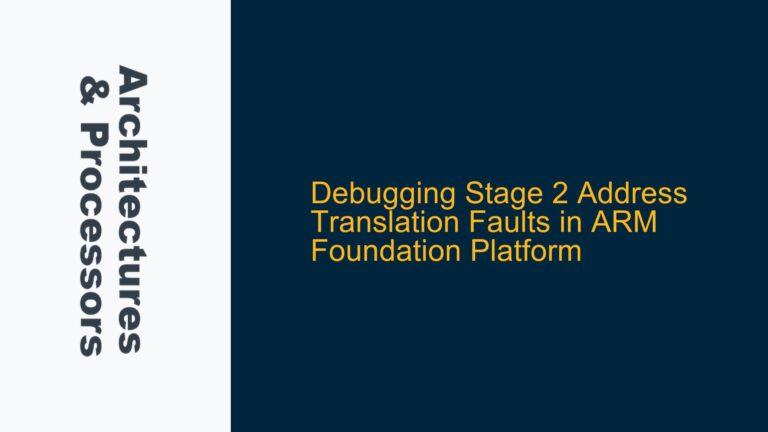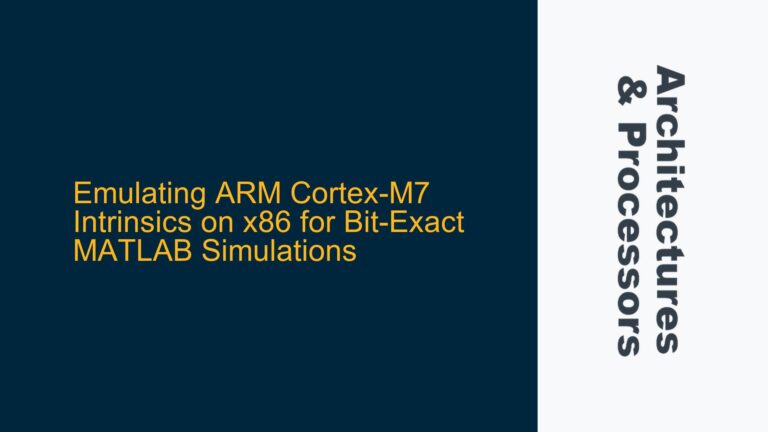ARM Cortex-A53 SMP Core Suspension in Secure OS Environments
Cache Coherency and Secure State Challenges in Core Suspension
Suspending an individual core in a Symmetric Multiprocessing (SMP) system, such as the ARM Cortex-A53 with four cores, while running a secure OS in the AA32 secure state, presents unique challenges. The primary concern revolves around maintaining cache coherency and ensuring that the secure state is preserved during the suspension and resumption of the core. The ARM Cortex-A53 processor, being part of the ARMv8-A architecture, supports both secure and non-secure states, which complicates the suspension process due to the need for cache management across these states.
The ARM Technical Reference Manual (TRM) provides guidelines on cleaning the cache and off-lining a core from the SMP configuration. However, it does not explicitly detail the process of flushing the cache across the secure world environment. This omission is critical because the secure state often handles sensitive data that must not be compromised during the suspension process. The cache, which stores temporary data, must be flushed to ensure that no residual data remains that could be accessed by unauthorized entities when the core resumes operation.
The secure OS running in the AA32 secure state must coordinate with the non-secure world to ensure that all necessary cache operations are performed before the core is suspended. This coordination is essential to prevent data corruption or leakage, which could occur if the cache is not properly managed. The secure OS must also ensure that the core’s state is saved and restored correctly, including the contents of the cache, to maintain system integrity.
Secure World Communication and PSCI Framework Integration
The Power State Coordination Interface (PSCI) framework, as defined by ARM, provides a standardized method for managing power states in multi-core systems. PSCI is particularly useful in SMP systems like the Cortex-A53, where individual cores may need to be suspended or resumed independently. The PSCI framework operates by sending messages between the non-secure and secure worlds, typically through Secure Monitor Call (SMC) instructions.
In the context of suspending an individual core, the non-secure world would initiate an SMC call to request the suspension of a specific core. The secure world, upon receiving this request, would perform the necessary cache flush operations and interface with the power controller to suspend the core. The PSCI framework ensures that these operations are carried out in a coordinated manner, preventing conflicts between the secure and non-secure worlds.
The secure OS must implement the PSCI handlers to manage these requests. The handlers are responsible for performing the cache flush, saving the core’s state, and communicating with the power controller. The cache flush operation must be thorough, ensuring that all levels of the cache (L1, L2, and any shared caches) are cleaned and invalidated. This process is critical to maintaining cache coherency and preventing data corruption.
The secure OS must also handle the resumption of the core. When a suspended core is requested to resume, the secure OS must restore the core’s state and ensure that the cache is in a consistent state. This involves reinitializing the cache and ensuring that any data that was in the cache before suspension is restored. The secure OS must also coordinate with the non-secure world to ensure that the core is reintegrated into the SMP configuration correctly.
Implementing Cache Flush and Core State Management in Secure OS
Implementing the cache flush and core state management in a secure OS requires careful consideration of the ARM architecture and the specific requirements of the Cortex-A53 processor. The secure OS must ensure that the cache flush operation is performed correctly, taking into account the hierarchical nature of the cache and the need to maintain coherency across all levels.
The cache flush operation typically involves the following steps: First, the secure OS must ensure that all dirty cache lines are written back to memory. This is done by executing a cache clean operation, which writes the contents of the cache lines to the main memory. Next, the secure OS must invalidate the cache lines to ensure that they are marked as empty and can be reused. This is done by executing a cache invalidate operation, which clears the cache lines and marks them as invalid.
The secure OS must also save the core’s state before suspending it. This includes saving the contents of the general-purpose registers, the program counter, and any other relevant state information. The secure OS must ensure that this state is saved in a secure location, such as a secure memory region, to prevent unauthorized access.
When the core is resumed, the secure OS must restore the core’s state and reinitialize the cache. This involves loading the saved state into the core’s registers and reinitializing the cache to ensure that it is in a consistent state. The secure OS must also ensure that the core is reintegrated into the SMP configuration correctly, allowing it to resume normal operation.
In addition to the cache flush and core state management, the secure OS must also handle any interrupts that may occur during the suspension and resumption process. The secure OS must ensure that interrupts are masked or handled appropriately to prevent any disruptions during the critical operations. This may involve configuring the interrupt controller to mask certain interrupts or handling them in a way that does not interfere with the suspension and resumption process.
The secure OS must also consider the impact of the suspension and resumption process on the overall system performance. Suspending and resuming a core can introduce latency, which may affect the performance of other cores in the SMP system. The secure OS must ensure that the suspension and resumption process is optimized to minimize this latency and maintain overall system performance.
In conclusion, suspending an individual core in an ARM Cortex-A53 SMP system with a secure OS running in the AA32 secure state requires careful management of the cache and core state. The secure OS must coordinate with the non-secure world using the PSCI framework to ensure that the cache is flushed and the core’s state is saved and restored correctly. The secure OS must also handle interrupts and optimize the suspension and resumption process to maintain system performance. By following these guidelines, the secure OS can ensure that the core suspension and resumption process is carried out safely and efficiently.






